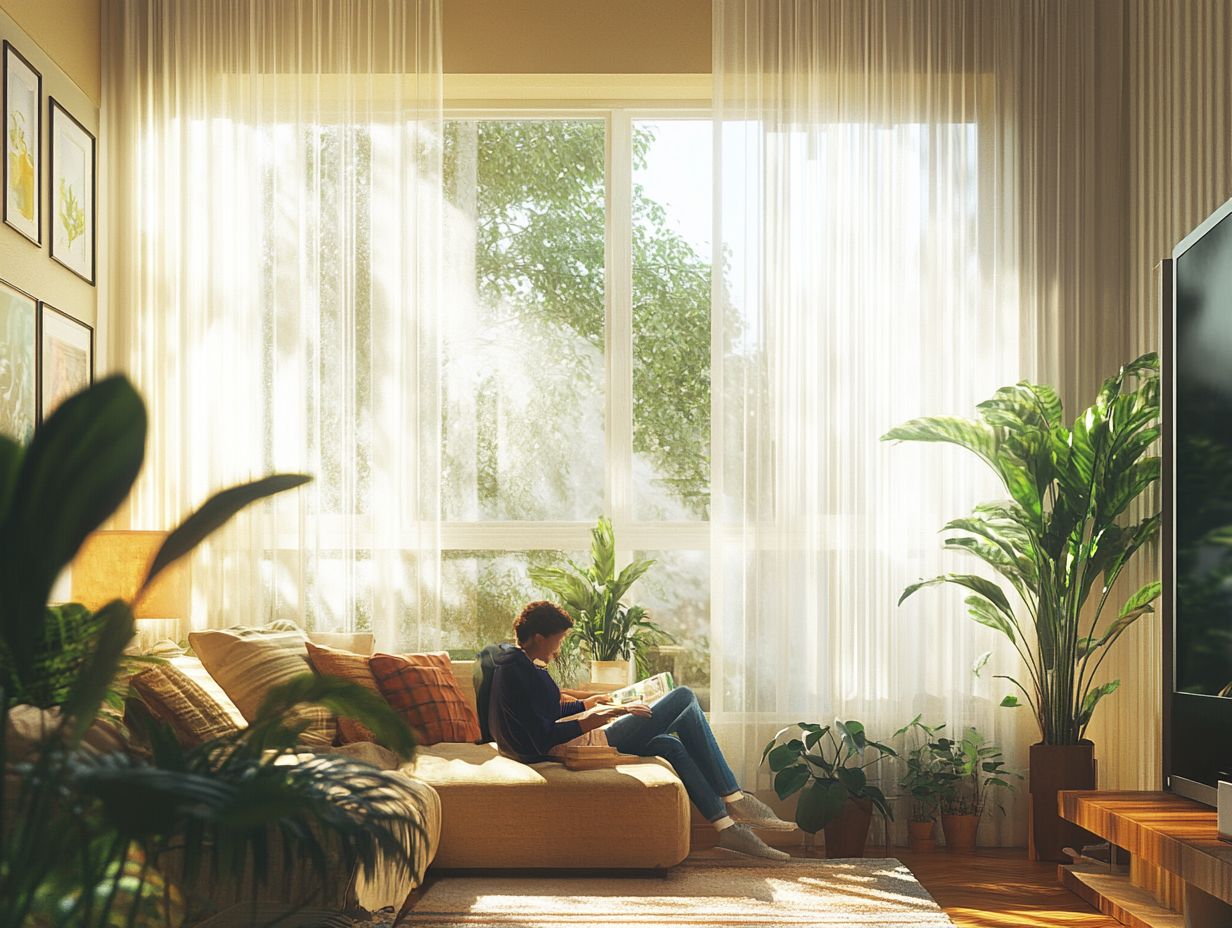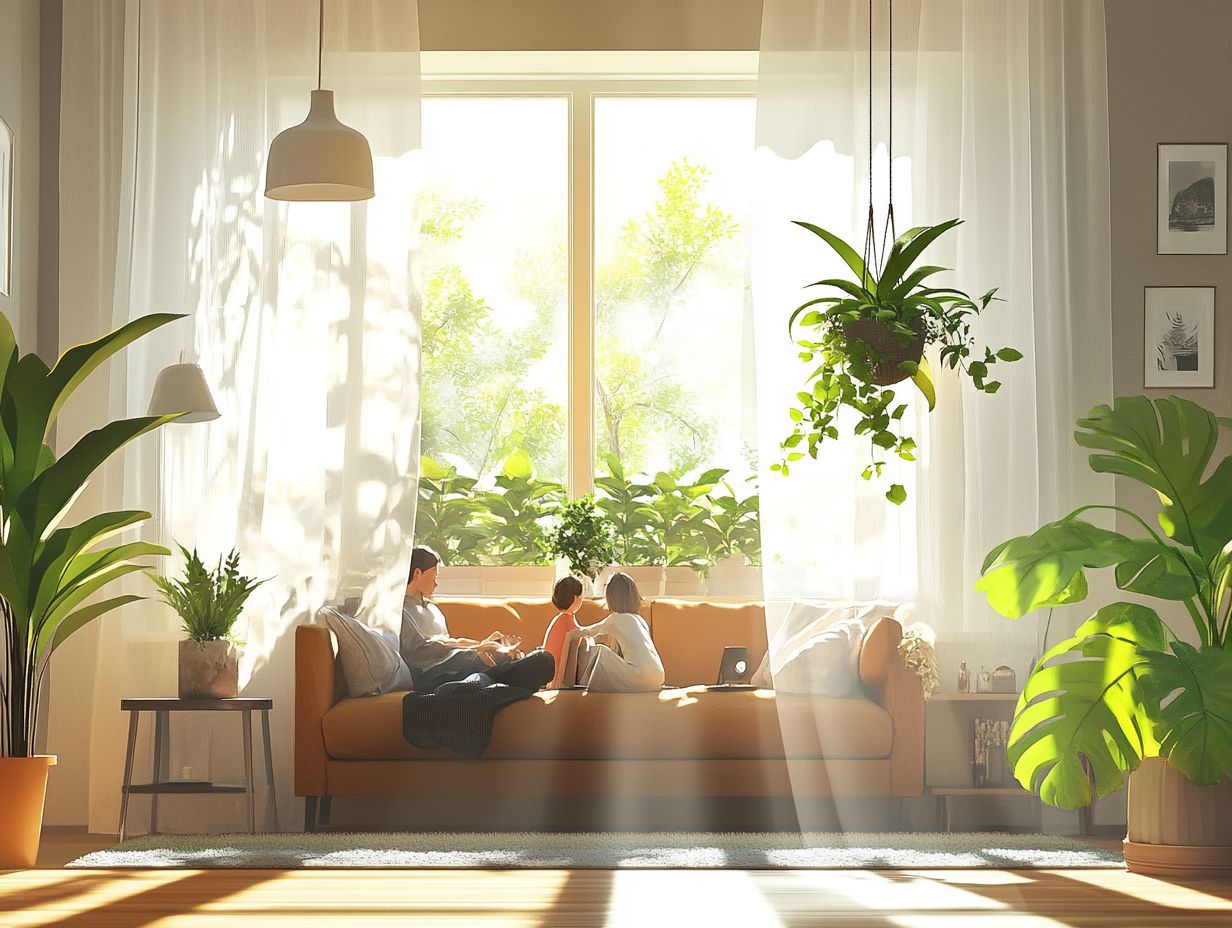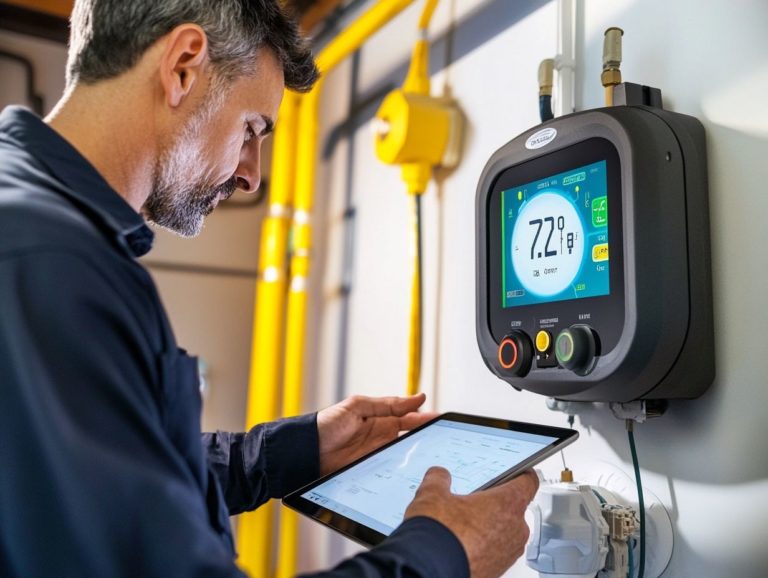How to Use Natural Ventilation in Homes?
Natural ventilation is a powerful yet frequently overlooked feature of home design that can dramatically enhance your living spaces. By harnessing the natural flow of air, you can improve indoor air quality, boost energy efficiency, and reduce costs.
This article delves into the many benefits of incorporating natural ventilation into your home, offering practical design strategies and maintenance tips to ensure optimal performance.
Discover how making informed ventilation choices can transform your environment into a healthier, more sustainable haven.
Contents
- Key Takeaways:
- Understanding Natural Ventilation
- Benefits of Natural Ventilation in Homes
- Designing for Natural Ventilation
- Maintaining and Maximizing Natural Ventilation
- Frequently Asked Questions
- What is natural ventilation and how can it be used in homes?
- What are the benefits of using natural ventilation in homes?
- How can I determine if my home is suitable for natural ventilation?
- What are some tips for optimizing natural ventilation in homes?
- Are there any drawbacks to using natural ventilation in homes?
- Can I still use natural ventilation in homes during extreme weather conditions?
Key Takeaways:

- Natural ventilation is the process of using natural airflow and circulation to improve indoor air quality and energy efficiency in homes.
- Implementing natural ventilation in homes can bring benefits such as improved indoor air quality, energy efficiency, and cost savings.
- Factors like site orientation, building layout, and the placement of openings should be considered when designing for natural ventilation in homes. Regular maintenance and optimization are key to maximizing its effectiveness.
Understanding Natural Ventilation
Understanding natural ventilation is paramount for anyone aiming to create healthy indoor environments and optimize energy efficiency in modern homes. This design approach utilizes nature’s forces to circulate fresh air, reducing reliance on mechanical systems while improving indoor air quality.
By employing strategies like stack ventilation (using vertical air movement), cross ventilation (airflow through opposite openings), and buoyancy-driven ventilation (warm air rising), you can significantly enhance thermal comfort and minimize energy consumption. Focusing on these principles not only enriches the living experience for occupants but also aligns perfectly with sustainable building practices.
Natural ventilation is an essential element in tropical architecture and contemporary building design.
What is Natural Ventilation?
Natural ventilation is an elegant method of air exchange that harnesses the forces of nature like wind and buoyancy to circulate air within your space, effectively diluting indoor air pollutants.
This technique depends on the thoughtful placement of windows, vents, and doors, creating pathways for fresh air to enter while stale air exits. Unlike mechanical ventilation systems that rely on fans and ducts to manage airflow, this passive design approach can significantly reduce energy consumption and operational costs.
For example, in residential buildings, well-designed cross ventilation where windows are strategically placed on opposite walls can provide effective cooling during warmer months. In commercial spaces, high ceilings can take advantage of buoyancy, allowing warmer air to rise and escape, thus fostering a healthier environment that enhances both comfort and productivity for occupants.
Benefits of Natural Ventilation in Homes
Embrace natural ventilation! It can transform your home into a healthier and more efficient space. This approach offers a wealth of advantages by dramatically enhancing indoor air quality, promoting energy efficiency, and leading to substantial cost savings.
For homeowners pursuing sustainable solutions, embracing natural ventilation is a wise choice that pays dividends.
Improved Indoor Air Quality
One of the key benefits of embracing natural ventilation systems is the remarkable enhancement of indoor air quality, which is vital for health and overall well-being.
By encouraging the flow of fresh air throughout your living spaces, these systems play a crucial role in creating a healthier environment. They effectively dilute indoor air pollutants like carbon dioxide, volatile organic compounds, and particulate matter, making your home a safer haven.
Utilizing strategies such as cross ventilation where opposing windows work in harmony to generate refreshing airflow and stack ventilation, which allows warm air to rise and escape through higher openings while cooler air enters from below, can be particularly effective.
These natural methods not only elevate comfort but also help maintain optimal humidity levels, resulting in a more breathable and invigorating atmosphere for you and your loved ones. Integrating features like air purifiers can further enhance indoor air quality.
Start transforming your living space today experience the benefits of natural ventilation!
Energy Efficiency

Natural ventilation boosts energy efficiency. It reduces the need for fans and air conditioners, cutting down your energy use.
This process uses wind and temperature differences to circulate air. It creates a cooler and more comfortable indoor environment without the high costs of air conditioning.
Strategically placing windows and vents lets fresh air in and lets heat escape, especially during cooler evenings.
Embrace passive ventilation techniques to save even more energy. Features like thermal mass, which are materials that store heat like stone or concrete, can keep your space cozy during the night.
These methods improve comfort and lower your utility bills, allowing you to enjoy a more sustainable lifestyle.
Cost Savings
Natural ventilation can save you money over time. By reducing the need for mechanical cooling systems, you ll see a drop in your monthly energy bills.
This approach cuts your reliance on expensive air conditioning units and their maintenance costs. Over the years, those savings add up!
Experience a more comfortable living space with lower costs act now!
Designing for Natural Ventilation
When designing for natural ventilation, consider key factors like building orientation, architectural design, and local climate.
These elements help maximize airflow and enhance thermal comfort within the space.
Factors to Consider
Understanding local climate patterns significantly influences airflow. Variations in temperature and humidity play a crucial role in how air moves through a space.
A well-oriented building can capture prevailing breezes, allowing fresh air to circulate while reducing dependence on mechanical systems.
Strategic window placement and thoughtful use of thermal mass enhance natural ventilation, creating a comfortable indoor environment.
By focusing on these elements, you not only improve the efficiency of ventilation systems but also promote better indoor air quality for occupants.
Strategies for Implementation
Implementing effective natural ventilation strategies requires integrating systems like solar chimneys, wind towers, and passive ventilation techniques tailored to your building’s design.
This thoughtful integration enhances indoor air quality and significantly reduces energy consumption, fostering a more sustainable environment.
Consider solar chimneys: their unique design harnesses solar energy, creating a thermal buoyancy effect that draws hot air upward while facilitating cooler air intake through lower openings.
Wind towers can take advantage of regional wind patterns, effectively channeling refreshing breezes into your living spaces while expelling stale air.
Utilizing passive ventilation systems is equally essential. These systems depend on architectural features and the strategic placement of windows and vents to optimize air exchange.
Start implementing these strategies today to create a sustainable environment!
Maintaining and Maximizing Natural Ventilation

By focusing on regular maintenance, you ll boost efficiency and enjoy cleaner air! Prioritize regular maintenance and optimization to enhance the effectiveness of your natural ventilation systems. This approach significantly improves indoor air quality for all occupants.
Regular Maintenance Tips
Regular maintenance of your natural ventilation systems is essential. It prevents indoor air pollutants from building up and ensures your systems perform at their best.
Here are a few straightforward steps to significantly boost your ventilation efficiency:
- Clean the ducts regularly to remove dust and debris that could hinder airflow.
- Check and replace filters to maintain clean air circulation.
- Ensure that vents and openings are clear of furniture, curtains, or any other obstructions. This will facilitate a smoother flow of fresh air throughout your space.
By adhering to these simple yet effective guidelines, you can cultivate a healthier indoor environment while optimizing energy use.
Optimizing Ventilation Effectiveness
You ll be amazed at how simple changes can improve airflow! Optimizing the effectiveness of natural ventilation requires various techniques that enhance airflow while keeping energy consumption at bay.
Strategically adjust window placements to maximize air flowing from one side of the house to the other. This allows cool breezes to flow effortlessly through your living spaces. Incorporating trickle ventilators, which are small devices that let fresh air in without needing to open windows wide, can offer a consistent stream of fresh air.
Thoughtfully designed architectural elements, like skylights or open floor plans, can further enhance air circulation, creating a welcoming atmosphere while championing sustainable living practices.
Frequently Asked Questions
What is natural ventilation and how can it be used in homes?
Natural ventilation is the process of using external air flow to regulate the air quality and temperature within a building. You can achieve it by strategically placing windows, doors, and vents to let fresh air enter and stale air exit.
What are the benefits of using natural ventilation in homes?

Using natural ventilation in homes brings numerous benefits, including improved air quality, reduced energy costs, and better overall health for occupants. It also helps to lessen reliance on mechanical ventilation systems.
How can I determine if my home is suitable for natural ventilation?
The design and layout of your home, along with the surrounding environment, determine its suitability for natural ventilation. A well-ventilated home typically has windows on opposite sides for effective cross-ventilation and is not obstructed by tall buildings or dense trees.
What are some tips for optimizing natural ventilation in homes?
To make the most out of natural ventilation:
- Keep windows and doors open on opposite sides of the house to allow for a cross-breeze.
- Install adjustable louvers or vents to control airflow and prevent drafts.
- Consider strategically placed ceiling fans to improve air circulation.
Start implementing these tips today for a fresher, healthier home!
Are there any drawbacks to using natural ventilation in homes?
While natural ventilation offers many benefits, it may not be feasible or effective in every home. Factors like noise pollution, climate, and security concerns can limit its use. It s essential to weigh the advantages and disadvantages before opting for natural ventilation.
Can I still use natural ventilation in homes during extreme weather conditions?
In some cases, natural ventilation may not provide sufficient airflow or temperature control during extreme weather. However, incorporating design features such as operable skylights, insulated windows, and shading devices can help overcome these challenges, enabling you to enjoy natural ventilation year-round.






